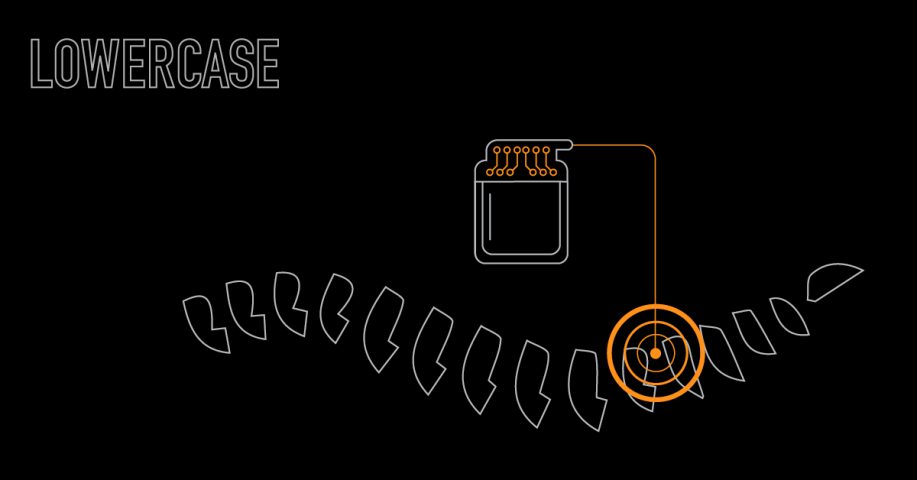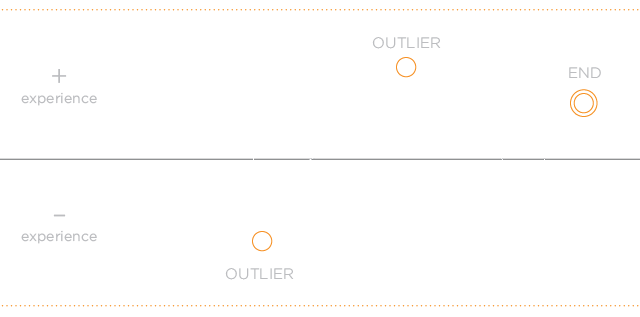Moments that Matter


When your customers assess an experience, every moment does not count equally–in fact, most do not count at all. The surprising truth: great experiences are mostly forgettable, save for a few notable moments.
Are you focusing on the moments that matter?
“I felt that!” exclaims the semi-sedated patient as the neurosurgeon begins testing sensitivity along the patient’s lower back. The surgeon is preparing to implant a device that will send electrical pulses to the patient’s spine and hopefully block chronic pain. The anesthesiologist makes adjustments—the patient must not feel the procedure but must be awake enough to confirm if, and when, pain is blocked.
The sales rep for the medical device company stands ready to help make the procedure a success. This device is new to the market and finding the optimal target in the spine is challenging. If this goes well, the surgeon is likely to recommend the device to most chronic pain patients.
The Diligent Rep
Hours behind schedule, the rep can’t leave the operating room. He’ll have to cancel sales calls and appointments which means missed quotas and reduced compensation. This is hard for the rep to accept because he has been, until recently, a top performer.
The Mistaken Goal
Sales reps have a small window to build a lead in the market, however, sales have been slower than expected and top reps are increasingly unhappy with the company. When a client faced this problem, they thought they needed to encourage reps to rapidly make more sales calls.
Instead, by understanding the experience from the surgeon’s perspective, we created a customer-centered solution that earned the company market leadership status.
Experiences are Made of Notable Moments
Customers do not assess an experience based on the sum, nor the average, of the moments within that experience.
The surprising truth: experiences–even great experiences—are mostly forgettable, save for a few notable moments.
Outliers and Endings are Everything

According to research by Daniel Kahneman, we focus on two key moments when recollecting and assessing an experience and how we felt about that experience: the “peaks” or outliers (whether positive or negative) and the end.
We remember outliers because we have a universal tendency to remember moments that feel more intense (“memory bias”).
For customers, this simply means that we overlook a lot–but those moments that cause us to feel something register as outliers and stick in memory.
Most experiences are forgettable because they do not trigger us to feel anything.
Endings are memorable because our brain holds a temporary memory of the current moment—and then swaps out that current moment with the next. At the end of a series of moments within an experience, we file the last moment away (“recency bias”).
When recollecting an experience and assessing how we felt about it, our “memory” is simply a combination of the ending and the outliers. Everything else fades away.
You Own Your Digital Experiences
Digital experiences provide additional challenges and opportunities for companies and customers.
Customers are known to be more forgiving of occasionally inconsistent experiences within a physical space. They realize that the variables (such as crowded aisles, the mood of the salesperson during the holiday rush, a credit card that requires verification, etc.) are not easy for your company to control.
But in the digital space, customers believe your company has full control.
On the plus side, this means your company gets full credit for positive experiences, such as the delight customers feel when interacting across channels that consistently and seamlessly integrate brand elements, content, and tasks.
On the minus side, this means that your company receives full blame for negative experiences, such as a confusing interface that derails the user’s intent. To compound the negativity, your company also receives blame for occasional experiences (that may not even be within your control) such as a site visit marked by unusually slow load times.
If the user leaves your site unhappy, they’ll recall the negative outlier(s) and the end moment when they finally gave up and clicked away.
Into the Field
So, how would a medical device company use the moments that matter to rapidly build sales?
Top sales reps intuitively picked up on what the company and other reps did not—that their long sales process included notable moments, and those moments always took place in the operating room.
By surfacing these insights and placing surgeons at the center of the strategy, we helped the company build processes and brand experiences that enabled reps to facilitate procedures and open large streams of revenue for the company.
Time to Get Started
When designing and implementing brand and digital strategies that elevate customer experience, it’s ideal to coordinate across the customer journey. However, if negative outliers are getting in the way and you need immediate results:
Prioritize your 80/20: Identify what isn’t working for your customers and why—from the customer perspective. If you’re pressed for time, fix the most significant outliers and the end. If you have more breathing room, focus on the 20% of causes that create 80% of your issues. But then move on.
You can always solve more issues later, but don’t try to fix everything. Many companies get stuck solving problems and removing negative outliers indefinitely. You have far more to gain by moving on to create positive outliers.
New is not better: Resist the urge to layer on a new experience as a way to distract from existing experiences. An event, sale, or contest might be a fun distraction for some customers, but it won’t improve core experiences for any customers.
Positive on purpose: Design-thinking is a great process for creating innovative customer-centered solutions to existing problems. As you move beyond fixing problems to designing positive outliers and endings, your company will reap significant rewards.
— STACY CHYLA BRUCE, Business Design Director